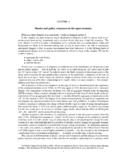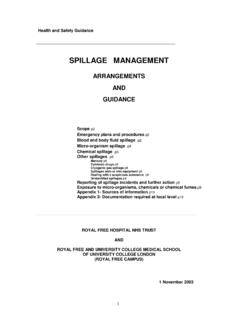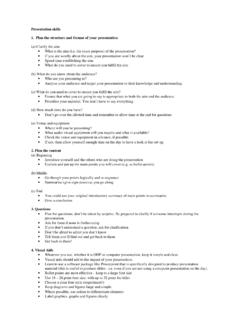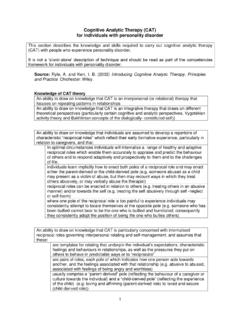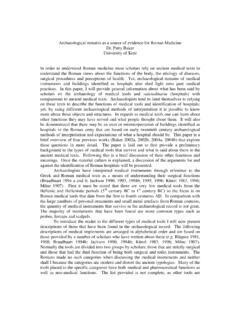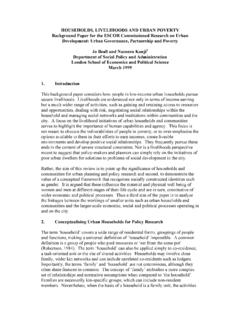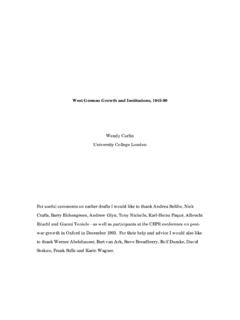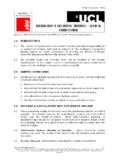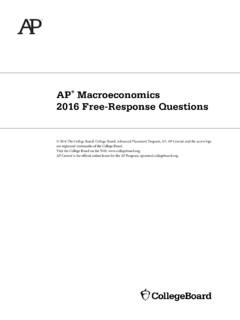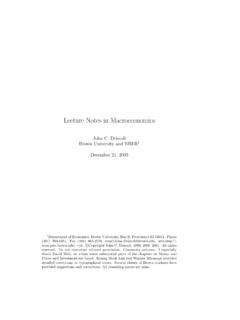Transcription of Teaching Intermediate Macroeconomics using the …
1 Teaching Intermediate Macroeconomics using the3-Equation ModelWendy Carlin and David SoskiceMuch Teaching of Intermediate Macroeconomics uses theIS-LM-ASorAD-ASapproach. This is far removed both from the practice of interest rate setting,inflation-targeting central banks and from the models that are taught in graduatecourses. Modern monetary Macroeconomics is based on what isincreasingly knownas the 3-equation New Keynesian model:IScurve, Phillips curve and interest rate-based monetary policy rule (IS-PC-MR). This is the basic analytical structure ofMichael Woodford s bookInterest and Pricespublished in 2003 and, for example,of the widely cited paper The New Keynesian Science of Monetary Policy byClarida et al.
2 Published in theJournal of Economic Literaturein 1999. A recentgraduate textbook treatment is Gali (2008). Much of this literature is inaccessibleto undergraduates and non-specialists. Our aim is to show how this divide can bebridged in a way that retains the tractability and policy-friendliness of the old ap-proach yet fits the institutional realities of contemporarypolicy-making and opensthe way to the more advanced contribution is to develop a version of the 3-equation model that can betaught to undergraduate students and can be deployed to analyze a broad range ofpolicy issues, including the recent credit/banking crisisand the oil and commoditiesprice can be taught using diagrams and minimal algebra. TheISdiagramis placed vertically above the Phillips diagram, with the monetary rule shown in thelatter along with the Phillips curves.
3 We believe that ourIS-PC-MRgraphicalanalysis is particularly useful for explaining the optimizing behaviour of the centralbank. Users can see and remember readily where the key relationships come fromand are therefore able to vary the assumptions about the behaviour of the policy-maker or the private sector. In order to use the model, it is necessary to think aboutthe economics behind the processes of adjustment. One of thereasonsIS-LM-ASgot a bad name is that it too frequently became an exercise in mechanical curve-shifting: students were often unable to explain the economic processes involvedin moving from one equilibrium to another. In the framework presented here, inorder to work through the adjustment process, the student has to engage in the sameforward-looking thinking as the model we propose for Teaching purposes is New Keynesian in its 3-equationstructure and its modelling of a forward-looking optimizing central bank.
4 A signif-icant problem for most students in the more formal versions of the New Keynesianmodel is the assumption that both households (in the IS equation) and price-setting1 This chapter is based on a section of Carlin and Soskice (2005).firms (in the Phillips curve) are forward looking. Our approach focuses just on aforward-looking Central Bank (in the Monetary or Taylor Rule) but does not incor-porate forward-looking behavour in either theIScurve or the Phillips The 3-Equation ModelIn this section, we set out the Carlin Soskice (C-S) simplified version of the 3equation model to show how it can be taught to undergraduates. Before showinghow the central bank s problem-solving can be illustrated in a diagram, we set outthe EquationsThe 3 equations are the IS equationy1=A ar0in which real incomeyis a positivefunction of autonomous expenditureAand a negative function of the real interestrater;the Phillips curve 1= 0+ (y1 ye), where is the rate of inflation andye, equilibrium output;and the central bank s Monetary Rule.
5 Equilibrium outputis the level of output associated with constant inflation. In a world of imperfectcompetition it reflects the mark-up and structural features of the labour market andwelfare shall see that in order to make its interest rate decision,anoptimizing central bank must take into account the lag in theeffect of a change inthe interest rate on output the so-called policy lag and any lag in the Phillipscurve from a change in output to inflation. The key lags in the system relevant tothe central bank s interest rate decision are shown in Fig. 1. In theIScurve, thechoice of interest rate in period zeror0will only affect output next periody1as ittakes time for interest rate changes to feed through to expenditure decisions.
6 In thePhillips curve, this period s inflation 1is affected by the current output gapy1 yeand by last period s inflation 0. The latter assumption of inflation persistencecan be justified in terms of lags in wage- and or price-settingor by reference tobackward-looking central bank minimizes a loss function, where the government requires it tokeep next period s inflation close to the target whilst avoiding large outputfluctua-tions:L= (y1 ye)2+ ( 1 T)2.(Central Bank loss function)Any deviation in output from equilibrium or inflation from target in either di-rection produces a loss in utility for the central bank. Thelag structure of the2 Both extensions are provided in Chapter 15 of Carlin and Soskice (2006).
7 3A more detailed discussion is provided in Carlin and Soskice(2006) Chapters 2, 4 and curve withinflation persistenceLag from monetary policy to aggregate demand: ISequation 0 1 Policy instrumentContemporaneous output in the Phillips curve Figure 1: The lag structure in the C S 3-equation modelmodel explains why it is 1andy1that feature in the central bank s loss function:by choosingr0, the central bank determinesy1, andy1in turn determines 1. This isillustrated in Fig. 1. The critical parameter in the centralbank s loss function is : >1will characterize a central bank that places less weight on outputfluctuationsthan on deviations in inflation, and vice versa. A more inflation-averse central bankis characterized by a higher.
8 The central bank optimizes by minimizing its loss function subject to the Phillipscurve: 1= 0+ (y1 ye).(Inertial Phillips curve:PCequation)By substituting the Phillips curve equation into the loss function and differentiatingwith respect toy1(which, as we have seen in Fig. 1, the central bank can choose bysettingr0), we have: L y1= (y1 ye)+ ( 0+ (y1 ye) T) = the Phillips curve back into this equation gives:(y1 ye) = ( 1 T).(Monetary rule:MR-ADequation)This equation is the optimal equilibrium relationship inperiod 1 between the in-flation rate chosen indirectly and the level of output chosen directly by the centralbank in the current period 0 to maximize its utility given itspreferences and theconstraints it is the logic of the central bank s position in period 0: it knows 0andhence it can work out via the Phillips curve (since 1= 0+.)
9 (y1 ye)) whatlevel ofy1it has to get to by setting the appropriater0in the current period for this equilibrium relation to hold. We shall see that there is a natural geometricway of highlighting this can either talk in terms of the Monetary Rule or alternatively the InterestRate Rule (sometimes called the optimal Taylor Rule), whichshows the short termreal interest rate relative to the stabilising or natural real rate of interest,rS,thatthe central bank should set now in response to a deviation of the current inflationrate from target. To find out the interest rate that the central bank should set in thecurrent period, as well as to deriverSwe need to use theISequation. The centralbank can set the nominal short-term interest rate directly,but since the expectedrate of inflation is given in the short run, the central bank is assumed tobe able tocontrol the real interest rate indirectly.
10 We make use here of the Fisher equation,i r+ E. TheISequation incorporates the lagged effect of the interest rate onoutput:y1=A ar0.(ISequation)A key concept is the stabilising interest raterS, which is the interest rate that pro-duces equilibrium output. This is defined byye=A subtracting this from theISequation we can rewrite theISequation in outputgap form as:y1 ye= a(r0 rS).(ISequation, output gap form)If we substitute for 1using the Phillips curve in theMR-ADequation, we get 0+ (y1 ye) T= 1 (y1 ye) 0 T= ( +1 )(y1 ye)and if we now substitute for(y1 ye) using theISequation, we get(r0 rS) =1a( +1 )( 0 T).(Interest-rate rule,IRequation)As a simple case, leta= = = 1, so that(r0 rS) = ( 0 T).This tells the central bank how to adjust the interest rate (relative to the stabilizinginterest rate) in response to a deviation of inflation from its setting out the central bank s problem in this way, we haveidentified thekey role of forecasting: the central bank must forecast the Phillips curve and theIScurve it will face next period.
